Modern Buddhist monuments outside Asia
While Buddhist monumental architecture is most closely associated with the sacred landscapes of Asia, the past few decades have witnessed the emergence of large-scale Buddhist monuments across Africa, the Americas, and Europe. Often initiated by transnational Buddhist organizations or diaspora communities, these structures serve not only as sites of devotion and meditation, but also as cultural landmarks, educational centers, and symbols of Buddhism’s global diffusion. Though fewer in number than their Asian counterparts, these monuments demonstrate the adaptability of sacred form to new geographies and cultural contexts.
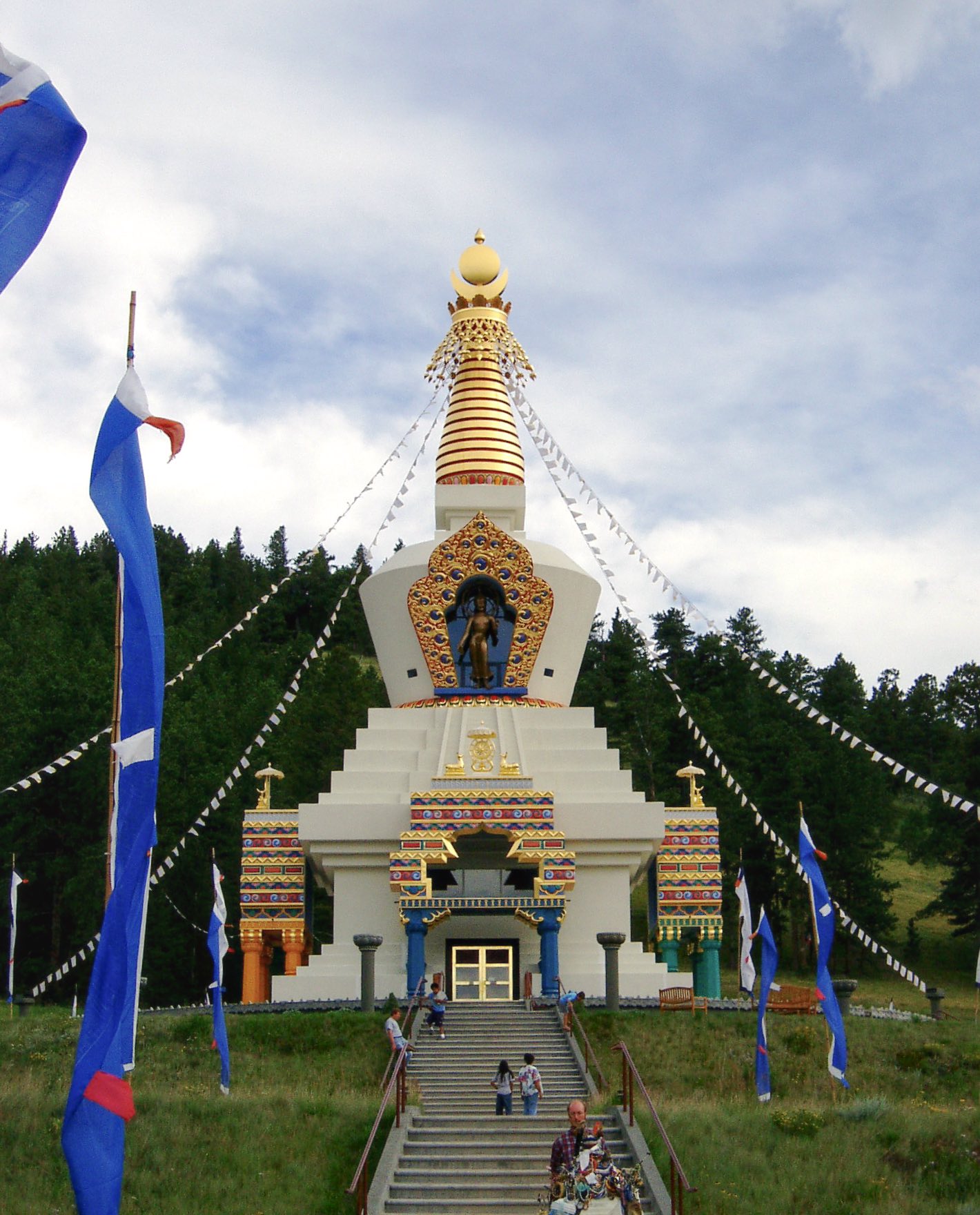
Great Stupa at Shambhala Mountain Center. Source: Wikimedia Commonsꜛ (license: CC BY-SA 2.5) (modified)
In this post, we explore four notable examples: Nan Hua Temple in South Africa, the Buddha Giant in Brazil, the Great Stupa of Dharmakaya in the United States, and the Temple of 1000 Buddhas in France. Through these case studies, we consider how modern Buddhist architecture outside Asia blends traditional iconography with local needs, promotes global Buddhist networks, and expands the visual and spiritual footprint of the tradition.
South Africa: Nan Hua Temple (Bronkhorstspruit)
Nan Hua Temple, located near Pretoria, is the largest Buddhist temple complex in Africa. Founded by the Fo Guang Shan order of Taiwan, it was inaugurated in 2005 and serves as a major hub for Mahāyāna Humanistic Buddhism on the continent. Built in traditional Chinese architectural style, the complex includes multiple prayer halls, pagodas, dormitories, and educational spaces.

Nan Hua Temple, Bronkhorstspruit, South Africa. Source: Wikimedia Commonsꜛ (license: CC BY-SA 2.0)
Its most distinctive features include a large golden Buddha statue housed in the Main Shrine, an elaborate drum and bell tower, and a meditation center that attracts practitioners from across Africa. Nan Hua functions as a spiritual, cultural, and philanthropic institution — offering classes, charity programs, and interfaith dialogue. Its construction exemplifies how traditional Chinese Buddhist architecture can be transposed into a new environment, supporting both devotional activity and cross-cultural outreach.
Brazil: Buddha of Ibiraçu
The Buddha of Ibiraçu, also known as the Great Buddha of Ibiraçu or Giant Buddha, completed in 2021 in southern Brazil, is one of the tallest Buddha statues outside of Asia. Standing approximately 35 meters high (and thus higher than the Christ the Redeemer statue in Rio de Janeiro), it was commissioned by Daiju Bitti, the abbot of Zen Buddhist monastery Ibiraçu, the largest in Latin America.

Buddha of Ibiraçu. Source: Wikimedia Commonsꜛ (license: CC BY-SA 1.0) (modified)
Next to it are another 15 meditating Buddha statues, each 2.5 meters high. It functions both as a pilgrimage destination and a public visual landmark. The project reflects the global reach of Buddhism and its capacity to inspire large-scale devotional art in culturally diverse settings.
United States: Great Stupa of Dharmakaya (Crestone, Colorado)
The Great Stupa of Dharmakaya, situated at the Shambhala Mountain Center in Colorado, was completed in 2001 after over a decade of construction. Standing over 33 meters tall, it is the largest stūpa of its kind in North America and was built in honor of Chögyam Trungpa Rinpoche, a pivotal figure in the transmission of Tibetan Buddhism to the West.
Designed according to traditional Tibetan architectural manuals, the stūpa enshrines relics of Trungpa Rinpoche and is constructed to last a thousand years. It incorporates symbolic geometries, vibrant mural paintings, and sacred objects within its inner chambers. Visitors of all backgrounds are welcome to enter the shrine, which serves as a space for meditation, contemplation, and spiritual pilgrimage. The Great Stupa is a landmark of Western Buddhist architecture and a testament to the continuity of Tibetan sacred design in a modern global context.
France: Temple of 1000 Buddhas (Kagyu Ling, Auvergne)
The Temple of 1000 Buddhas is part of the Kagyu Ling retreat center in the Auvergne region of France, established under the guidance of the 16th Karmapa and later developed by Lama Denys Rinpoche. The temple reflects the influence of the Karma Kagyu school of Tibetan Buddhism and was designed to house 1,000 Buddha statues as an expression of merit, devotion, and symbolic abundance.

Temple des mille Bouddhas, Saône-et-Loire, Bourgogne, France. Source: Wikimedia Commonsꜛ (license: CC BY-SA 2.5)
Completed in stages, the temple incorporates Tibetan decorative elements, colorful murals, and a mandala-inspired floor plan. While its size is more modest compared to some Asian monuments, it is architecturally and spiritually significant within the European Buddhist landscape. It functions as a center for intensive retreat, public teachings, and ceremonial gatherings, helping to embed Buddhist ritual life in a European setting.

Buddha hall of the Temple des mille Bouddhas, Saône-et-Loire, Bourgogne, France. Source: Wikimedia Commonsꜛ (license: CC BY-SA 4.0)
Conclusion
The emergence of monumental Buddhist structures outside Asia illustrates the continued dynamism of the tradition in the modern world. These sites serve as powerful reminders that Buddhist sacred architecture is not confined to its geographic origins but is constantly evolving in dialogue with new cultures, landscapes, and communities.
Through statues, stūpas, and temples, Buddhism asserts its presence in the global imagination — not only as a spiritual path but as a contributor to art, architecture, and transnational heritage. The monuments discussed here reveal how sacred space, once rooted in ancient pilgrimage networks and dynastic patronage, now thrives in the pluralistic and interconnected world of the 21st century.
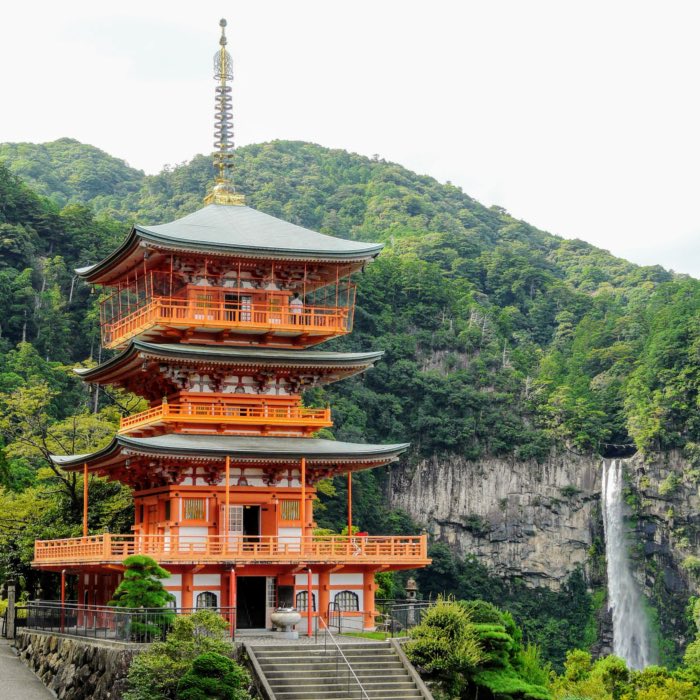

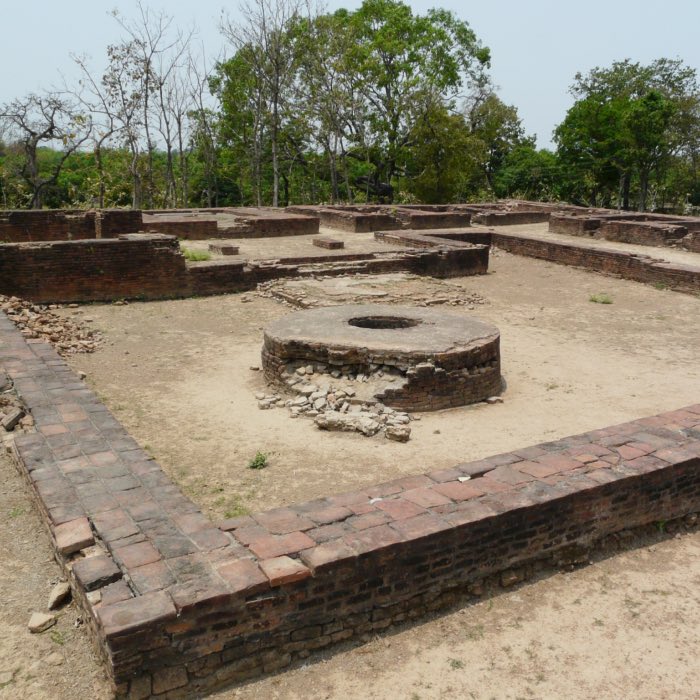





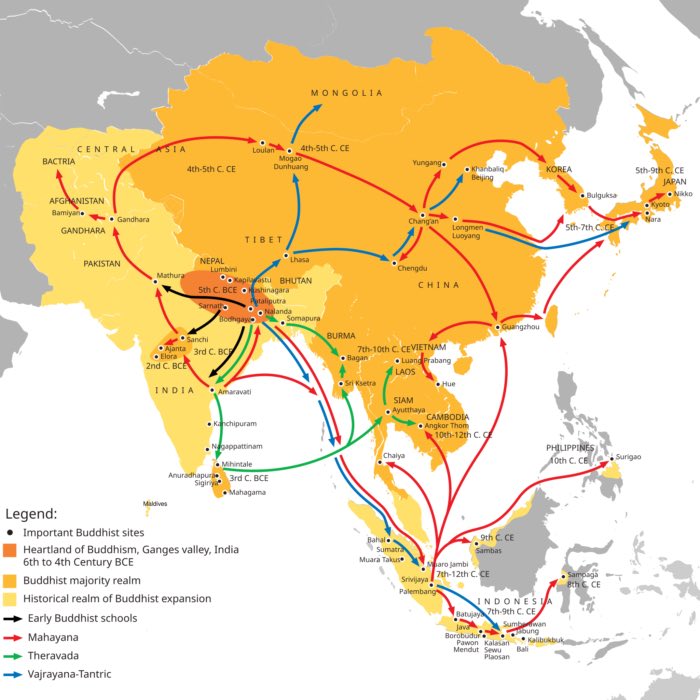




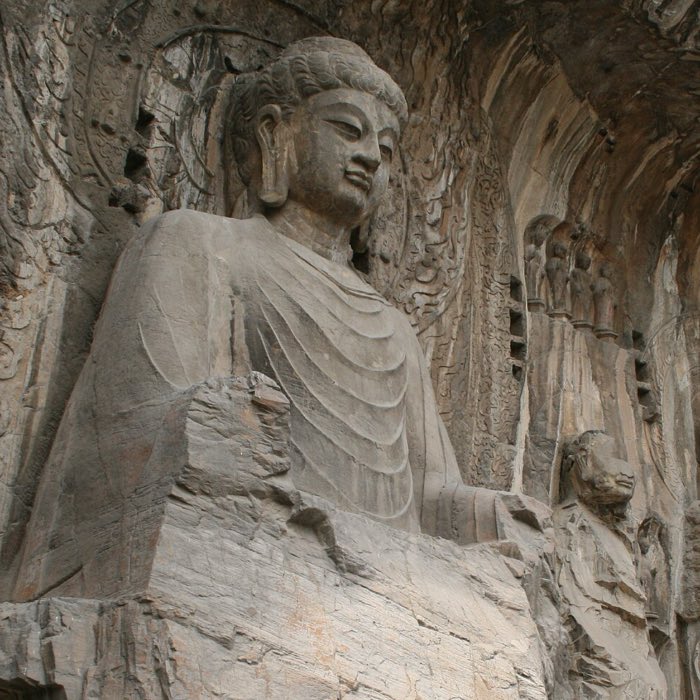
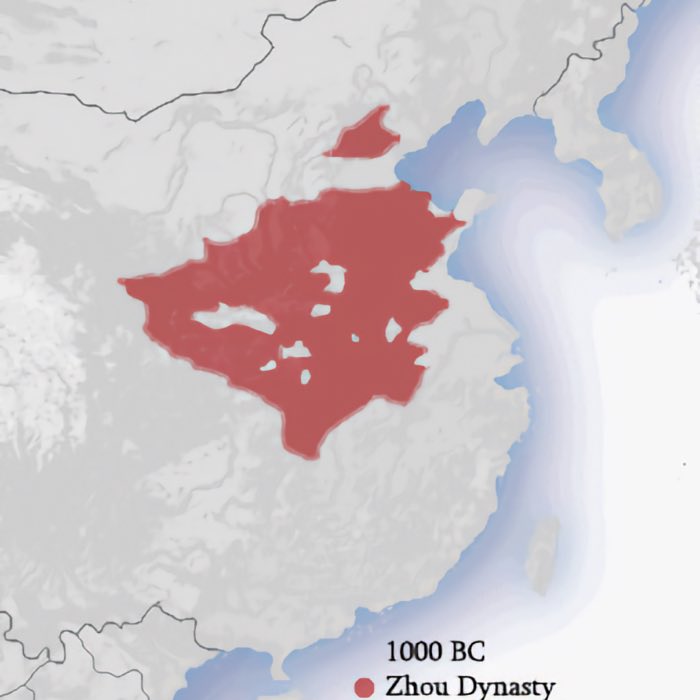
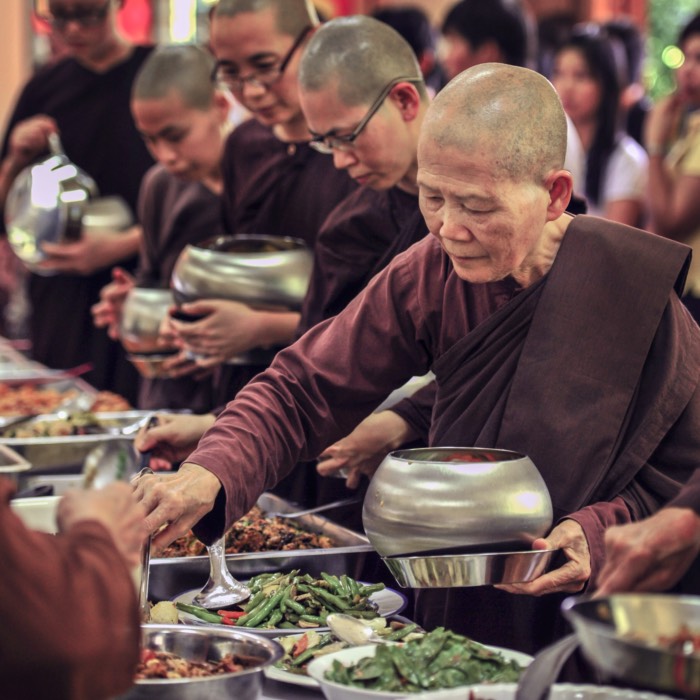
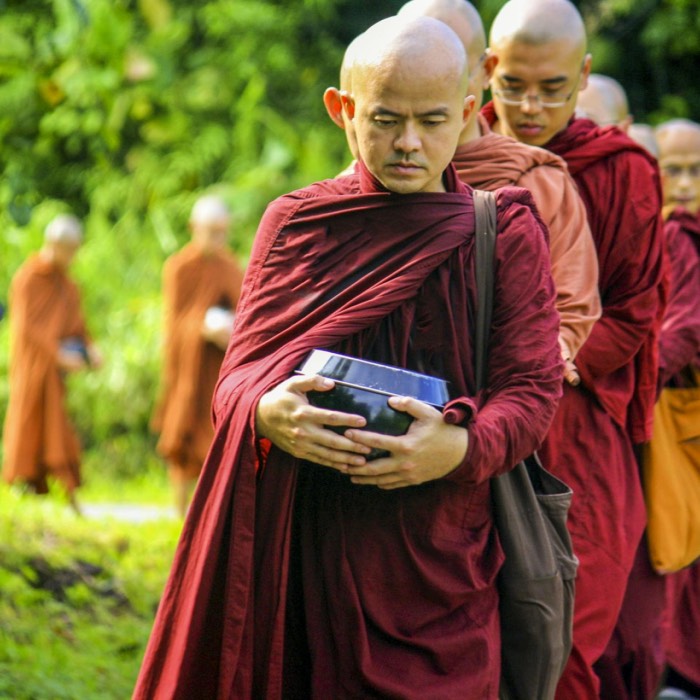



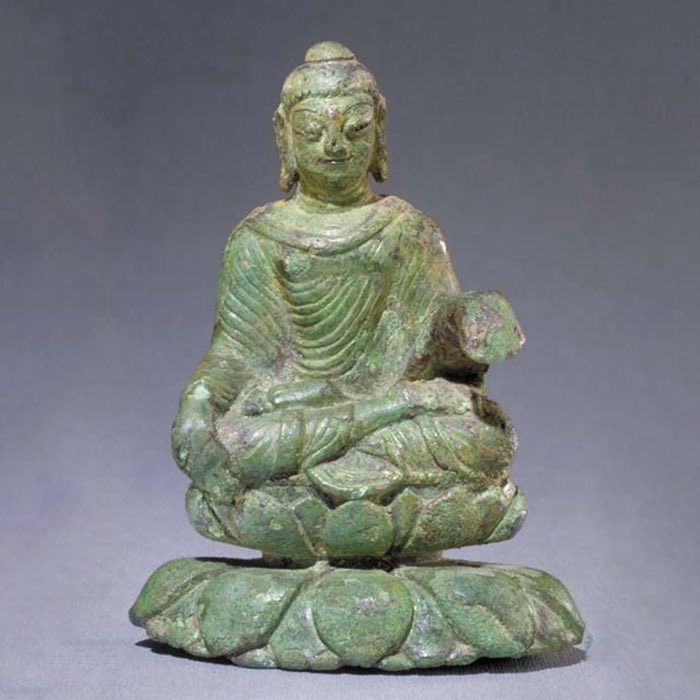


comments